Themed collection Green Chemistry Reviews

A perspective on developing solid-phase extraction technologies for industrial-scale critical materials recovery
Solid-phase extraction offers numerous advantages for critical materials recovery, and research in the field would benefit from increased focus on environmental impact, techno-economic assessments, and process scalability with real-world resources.

Green Chem., 2022,24, 2752-2765
https://doi.org/10.1039/D2GC00347C
Design strategies of phosphorus-containing catalysts for photocatalytic, photoelectrochemical and electrocatalytic water splitting
The innovational strategies to design P-containing catalysts with enhanced photo-/electro-catalytic water splitting activity are reviewed with respect to phase modifying, foreign elements introducing, morphology tailoring and interface engineering.
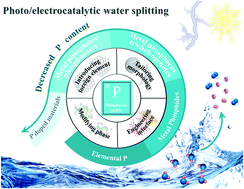
Green Chem., 2022,24, 713-747
https://doi.org/10.1039/D1GC03768D
Ionic liquids for renewable thermal energy storage – a perspective
This Perspective discusses the evolution and promise of the emerging application of ionic liquids for renewable thermal energy storage.
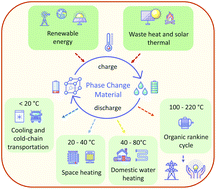
Green Chem., 2022,24, 102-117
https://doi.org/10.1039/D1GC03420K
Transition pathways towards net-zero emissions methanol production
The race to decarbonize our energy systems has led to significant advancement in technologies for harvesting renewable energy, carbon capture and conversion.
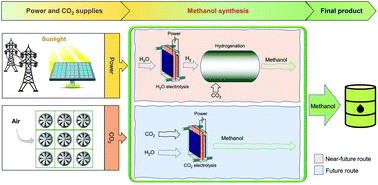
Green Chem., 2021,23, 9844-9854
https://doi.org/10.1039/D1GC01973B
From green to blue economy: Marine biorefineries for a sustainable ocean-based economy
Biorefinery is the ideal model to help marine industries to apply green and blue economy principles towards a more sustainable, profitable, and conscious ocean economy.
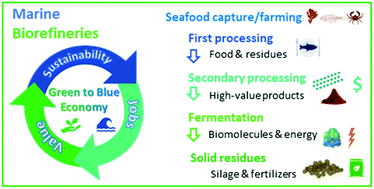
Green Chem., 2021,23, 9377-9400
https://doi.org/10.1039/D1GC03191K
Biocatalysis in ionic liquids: state-of-the-union
This perspective reviews the current status and prospects of biocatalysis in ionic liquids.
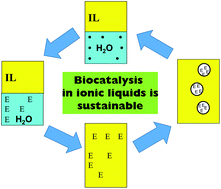
Green Chem., 2021,23, 8406-8427
https://doi.org/10.1039/D1GC03145G
Anode co-valorization for scalable and sustainable electrolysis
A state-of-the-art review on anode valorization reactions to improve the economic viability and scalability of water or CO2 electrolysis.

Green Chem., 2021,23, 7917-7936
https://doi.org/10.1039/D1GC02094C
Production of active pharmaceutical ingredients (APIs) from lignin-derived phenol and catechol
Active pharmaceutical ingredients (APIs) constitute a significant and growing global market; renewables are an increasingly important source of their starting materials.

Green Chem., 2021,23, 7488-7498
https://doi.org/10.1039/D1GC02158C
Furan platform chemicals beyond fuels and plastics
Primary furan platform chemicals are attractive reactants for the production of fuels and polymers. This perspective shows that they are economic starting materials in the chemical and enzymatic synthesis of numerous chemicals of varying complexity.

Green Chem., 2021,23, 7458-7487
https://doi.org/10.1039/D1GC02402G
Towards the design of active pharmaceutical ingredients mineralizing readily in the environment
The optimization phase within API discovery is suitable for environmental considerations through Benign by Design. Pharmacological parameters are not necessarily in conflict with environmental biodegradability as an additional parameter.

Green Chem., 2021,23, 5006-5023
https://doi.org/10.1039/D1GC01048D
Selenium-catalyzed selective reactions of carbonyl derivatives: state-of-the-art and future challenges
Organoselenium-catalyzed reactions of carbonyl derivatives can produce may useful compounds under mild and green conditions. This article aims to summarize the recent advances and give a perspective from both green chemistry and safety viewpoint.
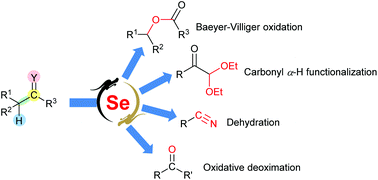
Green Chem., 2021,23, 4647-4655
https://doi.org/10.1039/D1GC00961C
Polymeric waste valorization at a crossroads: ten ways to bridge the research on model and complex/real feedstock
The valorization of polymeric wastes via depolymerization and simultaneous or subsequent catalytic treatment has gained enormous momentum. The goal of this paper is to do a virtuous circle between the subfields of model and real feedstock.

Green Chem., 2021,23, 4656-4664
https://doi.org/10.1039/D1GC00845E
Chemical energy storage enables the transformation of fossil energy systems to sustainability
The enormous dimensions of sustainable energy transitions and their overarching systemic nature require adequate responses from chemical science.
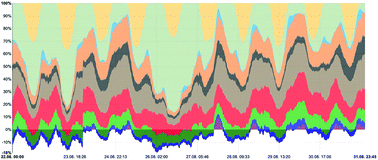
Green Chem., 2021,23, 1584-1593
https://doi.org/10.1039/D0GC03171B
Education in green chemistry and in sustainable chemistry: perspectives towards sustainability
Central role of future professionals in chemistry to promote alternatives towards sustainability.

Green Chem., 2021,23, 1594-1608
https://doi.org/10.1039/D0GC03313H
Catalytic challenges and strategies for the carbonylation of σ-bonds
Direct catalytic insertion of carbon monoxide in chemicals poses the challenge of controlling both the σ-bond activation and the subsequent carbonylation.

Green Chem., 2021,23, 723-739
https://doi.org/10.1039/D0GC02343D
CO2 hydrogenation over heterogeneous catalysts at atmospheric pressure: from electronic properties to product selectivity
The fundamental insights into the relationships among the electronic properties of active metals, the binding strengths of key intermediates, and the CO2 hydrogenation selectivity are provided.

Green Chem., 2021,23, 249-267
https://doi.org/10.1039/D0GC03506H
A second life for fruit and vegetable waste: a review on bioplastic films and coatings for potential food protection applications
Circular economy approach for various agrowaste-based bioplastic and biocomposite systems with potential applications in the protection of food products and extension of their shelf life.

Green Chem., 2022,24, 4703-4727
https://doi.org/10.1039/D1GC03904K
Research progress on the role of common metal catalysts in biomass pyrolysis: a state-of-the-art review
This review is dedicated to investigating the catalytic properties and mechanism of single and multi-metals in biomass pyrolysis.

Green Chem., 2022,24, 3922-3942
https://doi.org/10.1039/D1GC04537G
A review on the synthesis and applications of sustainable copper-based nanomaterials
A comprehensive review of the synthesis and applications of Cu and Cu-based nanomaterials. A variety of applications including organic reactions, photocatalysis, environmental remediation, and sensors have been included.

Green Chem., 2022,24, 3502-3573
https://doi.org/10.1039/D1GC04400A
Single-atom catalysts for the upgrading of biomass-derived molecules: an overview of their preparation, properties and applications
Developing more efficient and greener catalytic strategies for upgrading biomass to value-added chemicals and fuels is crucial for a more sustainable future. Recently, single-atom catalysts have played an important role in this mission.

Green Chem., 2022,24, 2722-2751
https://doi.org/10.1039/D1GC03809E
Chemically recyclable polymer materials: polymerization and depolymerization cycles
In this review, we aim to summarize strategies for achieving the polymerization–depolymerization cycle to access chemically recyclable polymers and highlight the current studies in this rapidly growing and promising area.

Green Chem., 2022,24, 2321-2346
https://doi.org/10.1039/D1GC03901F
Catalytic processes for the direct synthesis of dimethyl carbonate from CO2 and methanol: a review
The present review aims to discuss strategies that have been recently explored by researchers to improve the yield of DMC in its direct synthesis from CO2 and methanol.

Green Chem., 2022,24, 1067-1089
https://doi.org/10.1039/D1GC04093F
Recent progress on immobilization technology in enzymatic conversion of marine by-products to concentrated omega-3 fatty acids
A comprehensive summary of recent research progress applying immobilization technology in sustainable development of marine biomass to value-added products.

Green Chem., 2022,24, 1049-1066
https://doi.org/10.1039/D1GC03127A
Chemical recovery of thermosetting unsaturated polyester resins
This review addresses advances and challenges in the chemical recovery of waste unsaturated polyester resins, presents a new strategy of reconstruction-oriented recovery, and gives promising prospects on the recovery of the wastes.

Green Chem., 2022,24, 701-712
https://doi.org/10.1039/D1GC03724B
3D porous biomass-derived carbon materials: biomass sources, controllable transformation and microwave absorption application
This article reviews 3D porous biomass-derived carbon materials as microwave absorbers, including their biomass sources, the transformation from biomass to porous carbon, and their corresponding microwave absorption applications and mechanism.
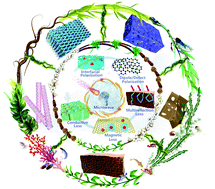
Green Chem., 2022,24, 647-674
https://doi.org/10.1039/D1GC02566J
A review on sustainable synthetic approaches toward photoluminescent quantum dots
The sustainable synthesis of photoluminescent quantum dots (QDs) and their formation mechanisms, advantages, and limitations are discussed. The remaining challenges and future prospects of sustainable synthetic strategies are summarized.
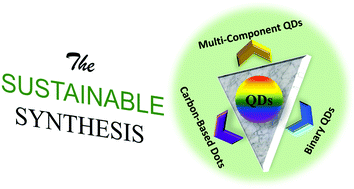
Green Chem., 2022,24, 675-700
https://doi.org/10.1039/D1GC02964A
Recent advances in polymer membranes employing non-toxic solvents and materials
Critical review for the recent developments of polymer membranes using non-toxic solvents and materials based on the green chemistry principle.

Green Chem., 2021,23, 9815-9843
https://doi.org/10.1039/D1GC03318B
Production of chemicals from marine biomass catalysed by acidic ionic liquids
Conversions of chitosan, chitin, and crustacean shells to high value-added chemicals using acidic ionic liquids (ILs) as catalysts have been reviewed, demonstrating the structural effect of marine biomass on their conversion.
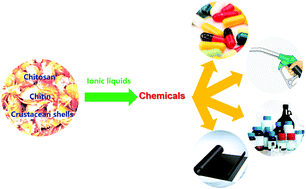
Green Chem., 2021,23, 9800-9814
https://doi.org/10.1039/D1GC03249F
Research progress on the preparation and application of biomass derived methyl levulinate
The research works on preparation and application of biomass derived methyl levulinate were summarized. The problems, corresponding solutions, and future research directions in this field were proposed.

Green Chem., 2021,23, 9254-9282
https://doi.org/10.1039/D1GC03474J
A review of hydrodeoxygenation of bio-oil: model compounds, catalysts, and equipment
Bio-oils are an important part of the future energy composition.
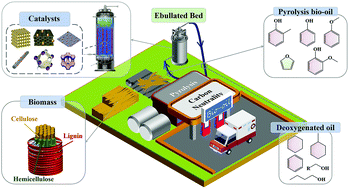
Green Chem., 2021,23, 9348-9376
https://doi.org/10.1039/D1GC03183J
Bifunctionalization of unsaturated bonds via carboxylative cyclization with CO2: a sustainable access to heterocyclic compounds
This review provides the state of the art of bifunctionalization of unsaturated bonds in carboxylative cyclization with CO2 and sheds light on its future development.
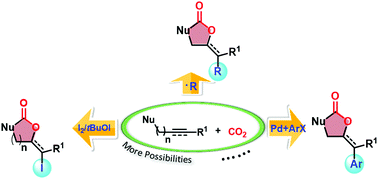
Green Chem., 2021,23, 9334-9347
https://doi.org/10.1039/D1GC02783B
Recent advances in the incorporation of CO2 for C–H and C–C bond functionalization
Functionalization with CO2: This tutorial review is focused on various approaches developed so far for functionalization of unsaturated C–C & C–H bonds using CO2 to achieve carboxylation, lactonization & lactamization by metal and metal free methods.
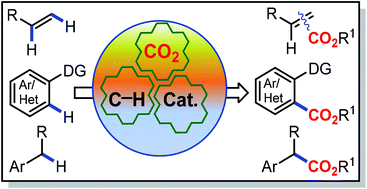
Green Chem., 2021,23, 9283-9317
https://doi.org/10.1039/D1GC02737A
Homogeneous modification of chitin and chitosan based on an alkali/urea soluble system and their applications in biomedical engineering
The homogeneous chemical modification of chitosan and chitin in alkali/urea solvents and their possible applications.

Green Chem., 2021,23, 9318-9333
https://doi.org/10.1039/D1GC03205D
Recommendations for replacing PET on packaging, fiber, and film materials with biobased counterparts
What are the most promising biobased PET replacements? Are they economically feasible? Are they sustainable? Industrially feasible? In the future, PET will certainly be replaced by more than one option, e.g., PEF, PTF, bio-PET, and PLA.

Green Chem., 2021,23, 8795-8820
https://doi.org/10.1039/D1GC02082J
Neoteric solvent-based blue biorefinery: for chemicals, functional materials and fuels from oceanic biomass
Chemicals, materials and fuels from oceanic biomass using new types of solvent systems, facilitating sustainable and eco-friendly blue-biorefineries.
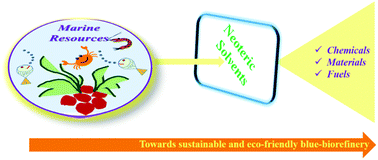
Green Chem., 2021,23, 8821-8847
https://doi.org/10.1039/D1GC03184H
Advances in catalytic dehydrogenation of ethanol to acetaldehyde
This review summarizes the recent catalyst achievements in oxidative and non-oxidative dehydrogenation of ethanol, and analyzes the reaction mechanism over typical catalysts.

Green Chem., 2021,23, 7902-7916
https://doi.org/10.1039/D1GC02799A
Biomass-derived polymeric binders in silicon anodes for battery energy storage applications
Recent developments in silicon anode binders derived from various biomass sources, with a focus on polymer properties and their effect on battery performance.
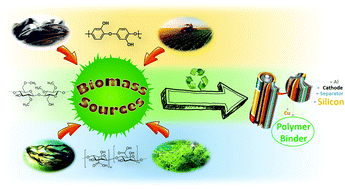
Green Chem., 2021,23, 7890-7901
https://doi.org/10.1039/D1GC01814K
Porous organic polymers as metal free heterogeneous organocatalysts
This review addresses the current literature on porous organic polymers (POPs) as a new class of metal free green heterogeneous catalysts.

Green Chem., 2021,23, 7361-7434
https://doi.org/10.1039/D1GC02319E
Polymeric carbon nitride-based photocatalysts for photoreforming of biomass derivatives
Chemical and structural modification of carbon nitride for biomass photoreforming.

Green Chem., 2021,23, 7435-7457
https://doi.org/10.1039/D1GC02307A
Reductive depolymerization as an efficient methodology for the conversion of plastic waste into value-added compounds
Reductive depolymerization allows the valorization of polyester, polycarbonate and polyamide waste in a wide variety of value-added compounds with good yields

Green Chem., 2021,23, 7330-7360
https://doi.org/10.1039/D1GC01634B
Sustainable advances in SLA/DLP 3D printing materials and processes
The 3D printing market is booming in various sectors coupled with an alarming increase in 3D printed plastic waste. This review summarizes sustainable advances in SLA/DLP plastic 3D printing to date and offers a perspective for further developments.

Green Chem., 2021,23, 6863-6897
https://doi.org/10.1039/D1GC01489G
Recent advances in non-precious metal electrocatalysts for oxygen reduction in acidic media and PEMFCs: an activity, stability and mechanism study
The state-of-the-art PGM-free ORR catalysts for PEMFCs, including their active sites, ORR and deactivation mechanisms are reviewed.
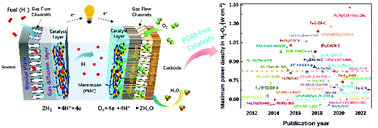
Green Chem., 2021,23, 6898-6925
https://doi.org/10.1039/D1GC01040A
Cross-dehydrogenative coupling: a sustainable reaction for C–C bond formations
We provide a review of the progress of cross-dehydrogenative coupling reactions in constructing a wide variety of C–C bonds. Sustainable cross-dehydrogenative coupling reactions can be combined with multiple forms of energy output.

Green Chem., 2021,23, 6789-6862
https://doi.org/10.1039/D1GC01871J
Electrochemical product engineering towards sustainable recovery and manufacturing of critical metals
This review presents an overview of electrochemical product engineering towards critical metal recovery and manufacturing, looking at process optimization and product innovation aspects.

Green Chem., 2021,23, 6301-6321
https://doi.org/10.1039/D1GC01462E
Engineering graphitic carbon nitride (g-C3N4) for catalytic reduction of CO2 to fuels and chemicals: strategy and mechanism
This review summarises the structural-compositional engineering of carbon nitride (g-C3N4) for electrocatalytic and photocatalytic CO2 reduction to chemicals and fuels experimentally and theoretically.
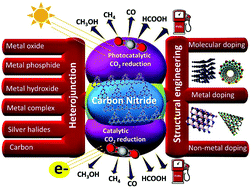
Green Chem., 2021,23, 5394-5428
https://doi.org/10.1039/D1GC01303C
Enzyme entrapment, biocatalyst immobilization without covalent attachment
The entrapment of enzymes in organic, inorganic or biomaterials can yield active immobilized biocatalysts for chemical transformations without the need to form covalent bonds with the protein.

Green Chem., 2021,23, 4980-5005
https://doi.org/10.1039/D1GC01852C
Aqueous redox flow batteries: How ‘green’ are the redox active materials?
Development of active materials in aqueous organic redox flow battery contributes to the aspect of green technology. The ‘greenness’ of synthetic methodologies for preparing active materials are evaluated using the 12 principles of green chemistry.

Green Chem., 2021,23, 4955-4979
https://doi.org/10.1039/D1GC01333E
Review on lignin modifications toward natural UV protection ingredient for lignin-based sunscreens
Lignin is a natural UV-blocking material owing to its aromatic structure with numerous phenolic, ketone, and intramolecular hydrogen bonds. To produce high-performance and applicable sunscreen from lignin, various modification methods can be applied.

Green Chem., 2021,23, 4633-4646
https://doi.org/10.1039/D1GC01139A
Click chemistry for the synthesis of biobased polymers and networks derived from vegetable oils
Click green chemistry as an efficient functionalization and polymerization method of vegetable oils and their derivatives.
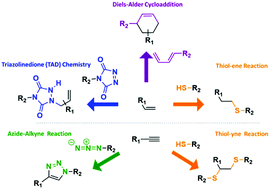
Green Chem., 2021,23, 4296-4327
https://doi.org/10.1039/D1GC00445J
Self-assembly, interfacial properties, interactions with macromolecules and molecular modelling and simulation of microbial bio-based amphiphiles (biosurfactants). A tutorial review
Amphiphiles obtained by microbial fermentation, known as biosurfactants or bioamphiphiles, are reviewed in terms of their solution experimental and theoretical self-assembly properties, interface properties and interactions with macromolecules.

Green Chem., 2021,23, 3842-3944
https://doi.org/10.1039/D1GC00097G
Metal phosphate catalysts to upgrade lignocellulose biomass into value-added chemicals and biofuels
This review presents an overview of the transformation of biomass-derived platform chemicals into value-added chemicals and biofuels using metal phosphate-based heterogeneous catalysts.

Green Chem., 2021,23, 3818-3841
https://doi.org/10.1039/D1GC00376C
Research progress on the photocatalytic activation of methane to methanol
This review presents the recent progress of the photocatalytic conversion of CH4 to CH3OH from four aspects: photocatalysts, oxidants, sacrificial reagents, and CH4 activation mechanisms, along with its current status and existing challenges.

Green Chem., 2021,23, 3526-3541
https://doi.org/10.1039/D1GC00658D
Fundamentals of cellulose lightweight materials: bio-based assemblies with tailored properties
Cellulose building blocks can be assembled into lightweight materials with properties tailored by the density and the morphology.
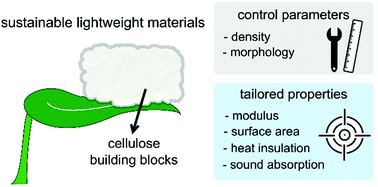
Green Chem., 2021,23, 3542-3568
https://doi.org/10.1039/D1GC00326G
Applied biocatalysis beyond just buffers – from aqueous to unconventional media. Options and guidelines
It's not only lipases which can be applied in alternative solvent systems to meet industrial and environmental demands. At the hand of case studies and flowcharts this review quickly shows what solvent systems are viable.
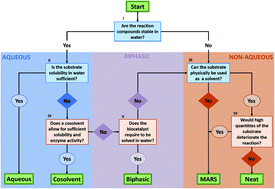
Green Chem., 2021,23, 3191-3206
https://doi.org/10.1039/D1GC00561H
Insights into the development of Cu-based photocathodes for carbon dioxide (CO2) conversion
The development of Cu-based photocathodes plays a critical role in in the realm of PEC CO2 reduction, especially for the formation of C2 products.

Green Chem., 2021,23, 3207-3240
https://doi.org/10.1039/D0GC04417B
Electrochemical upgrading of depolymerized lignin: a review of model compound studies
This review addresses advancements and challenges in the use of electrochemical methods as a means of upgrading lignin-derived model compounds to value-added products.

Green Chem., 2021,23, 2868-2899
https://doi.org/10.1039/D0GC04127K
Magnetron sputtering enabled sustainable synthesis of nanomaterials for energy electrocatalysis
This review summarizes recent advances in developing sputtered nanomaterials as catalysts for energy electrocatalysis. In-depth insights into architecture/compositional design, synthesis, mechanism, and performance are provided.

Green Chem., 2021,23, 2834-2867
https://doi.org/10.1039/D0GC03994B
Flow synthesis approaches to privileged scaffolds – recent routes reviewed for green and sustainable aspects
This review discusses the use of flow chemistry as versatile tool for the synthesis and derivatisation of privileged scaffolds, looking at applicability, diversity-oriented synthesis options, inherent sustainability and green chemistry aspects.

Green Chem., 2021,23, 2233-2292
https://doi.org/10.1039/D0GC03883K
Optimisation of catalysts coupling in multi-catalytic hybrid materials: perspectives for the next revolution in catalysis
From the fusion of bio- and chemocatalysts, immobilized in innovative materials, a new family of catalysts is emerging: multi-catalytic hybrid materials (MCHMs). It offers atom and energy savings and, above all, new prospects in chemical synthesis.
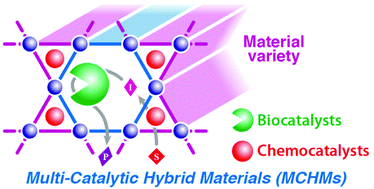
Green Chem., 2021,23, 1942-1954
https://doi.org/10.1039/D0GC04172F
Tandem catalysis: one-pot synthesis of cyclic organic carbonates from olefins and carbon dioxide
One-pot tandem procedures represent a green and general approach towards process intensification as they are intrinsically simpler compared to the conventional stepwise processes, do not require intermediate isolation and are generally more efficient.

Green Chem., 2021,23, 1921-1941
https://doi.org/10.1039/D0GC04168H
Chemical reactions in the hydrothermal liquefaction of biomass and in the catalytic hydrogenation upgrading of biocrude
This article systematically describes chemical reactions in biomass HTL and the catalytic hydrogenation upgrading of the obtained biocrude and analyze the effects of operating parameters on these two processes, such as reaction temperature, residence time and catalyst type.

Green Chem., 2021,23, 1562-1583
https://doi.org/10.1039/D0GC02893B
Recent progress in the catalytic transformation of carbon dioxide into biosourced organic carbonates
The recent advances made in the catalytic preparation of biobased cyclic carbonates derived from sugars, glycerol, fatty acids/vegetable oils and terpenes are presented, together with a discussion surrounding their potential applications.
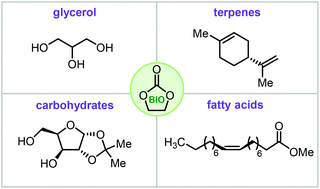
Green Chem., 2021,23, 1077-1113
https://doi.org/10.1039/D0GC03824E
Catalytic hydrothermal deoxygenation of lipids and fatty acids to diesel-like hydrocarbons: a review
This review summarizes the reactions, catalysts and influence factors in the hydrothermal deoxygenation of lipids and fatty acids to diesel-like hydrocarbons.

Green Chem., 2021,23, 1114-1129
https://doi.org/10.1039/D0GC03707A
Recent advances in heterogeneous catalytic transfer hydrogenation/hydrogenolysis for valorization of biomass-derived furanic compounds
Catalytic transfer hydrogenation/hydrogenolysis can valorize renewable compounds derived from biomass. Different catalysts have the ability to transfer hydrogen from hydrogen-donor molecules thereby avoiding the use of hazardous gaseous hydrogen.

Green Chem., 2021,23, 670-688
https://doi.org/10.1039/D0GC03931D
Biomolecule-assisted synthesis of biomimetic nanocomposite hydrogel for hemostatic and wound healing applications
Biomolecule-assisted synthesis of biomimetic nanocomposite hydrogels reduces the environmental impact and has potential applications in hemostasis and wound healing.

Green Chem., 2021,23, 629-669
https://doi.org/10.1039/D0GC03010D
Recent advances in visible-light-mediated organic transformations in water
Water is a green reaction medium, while visible light represents a renewable, clean, and abundant energy source. The recent advances in visible-light-mediated organic transformations in water are summarized.

Green Chem., 2021,23, 232-248
https://doi.org/10.1039/D0GC03447A
Lignin to value-added chemicals and advanced materials: extraction, degradation, and functionalization
The recently developed strategies for the degradation and functionalization of lignin enable it to be converted into a wide variety of value-added -chemicals, -and advanced materials.

Green Chem., 2022,24, 7705-7750
https://doi.org/10.1039/D2GC00092J
Role of stereocomplex in advancing mass transport and thermomechanical properties of polylactide
Stereocomplex polylactide with physical crosslinking crystallites, empowering polylactide based materials with advanced performances and opening new opportunities for applications.

Green Chem., 2022,24, 3416-3432
https://doi.org/10.1039/D1GC04520B
Visible-light-induced metal-free coupling of C(sp3)–H sources with heteroarenes
This critical review chronologically summarizes the metal-free coupling methodologies of C(sp3)–H sources with heteroarenes induced by visible light. The articles which are published up to January 2022 on this topic are enclosed here.

Green Chem., 2022,24, 3056-3080
https://doi.org/10.1039/D1GC04384F
The sustainability of phytomass-derived materials: thermodynamical aspects, life cycle analysis and research perspectives
A multiscale approach to sustainability was selected to analyse lignocellulose uses and availability with a focus on biomass growth, paper, insulation, construction wood, information and communication technologies, and biobased textiles.

Green Chem., 2022,24, 2653-2679
https://doi.org/10.1039/D1GC03262C
About this collection
Welcome to our online collection of Green Chemistry reviews. Here we feature Critical reviews, Tutorial reviews and Perspective articles published in 2021. For more information about the different review types go to www.rsc.li/greenchem
Congratulations to all the authors whose articles are featured and we hope readers enjoy this collection.